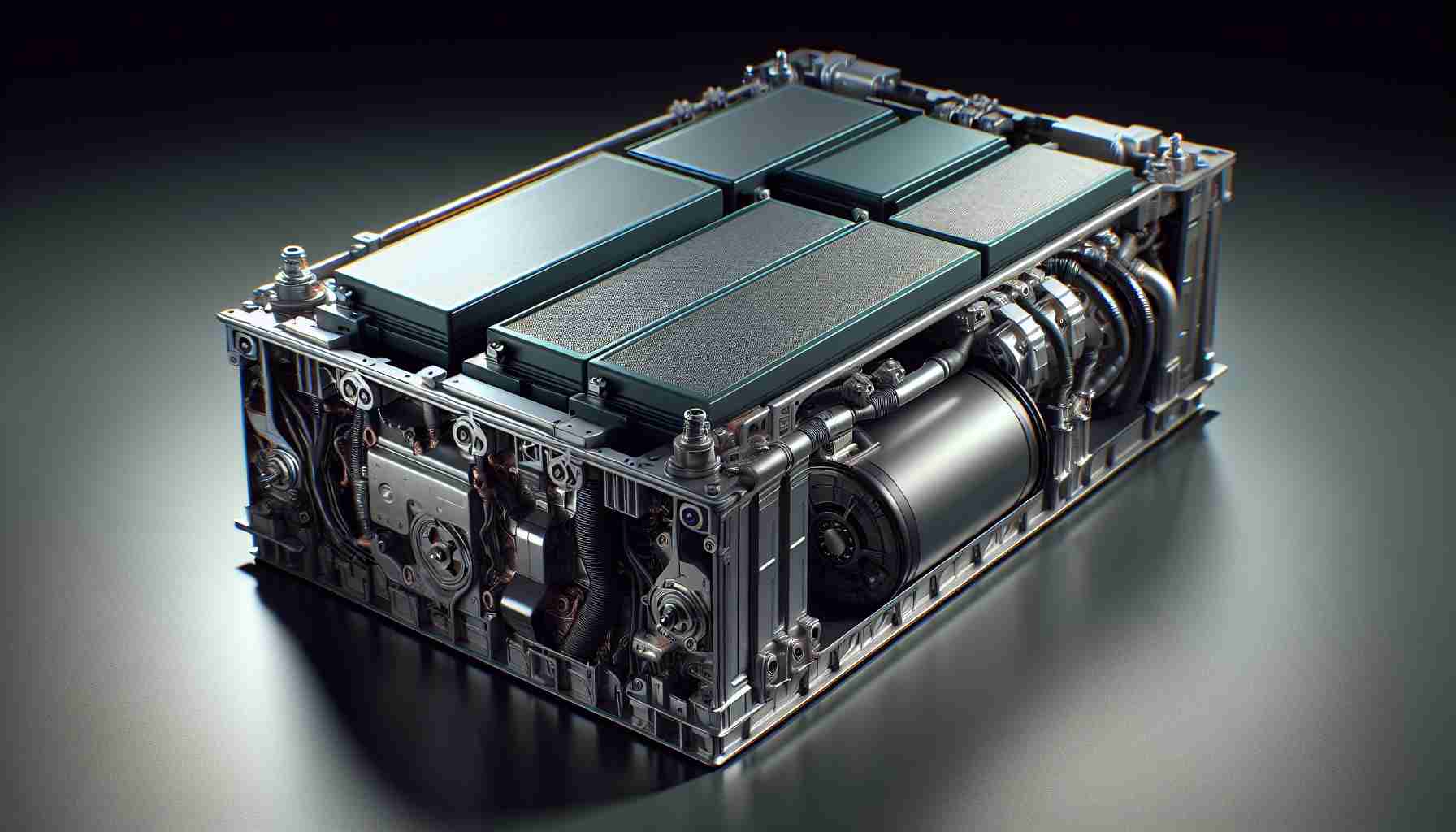The Future of Solid-State Batteries
The solid-state battery sector is on the verge of significant expansion, with projections indicating growth from $1.48 billion in 2023 to an impressive $12.78 billion by 2030, driven by a compound annual growth rate (CAGR) of 36%. This surge is anticipated as automotive companies increasingly invest in next-generation battery technologies.
Understanding Solid-State Batteries
Solid-state batteries present a promising alternative to traditional lithium-ion options, utilizing solid materials for both electrodes and electrolytes. This advancement contributes to enhanced safety and quicker charging capabilities, making them highly desirable for electric vehicle (EV) performance enhancements.
Drivers of Growth
Key factors propelling the solid-state battery market include the growing demand for electric vehicles and ongoing advancements in battery technologies. Governments and consumers are keen on eco-friendly solutions to replace fossil fuels, and solid-state batteries are well-positioned to address these needs due to their higher energy density and safety features.
Current Market Trends
A strong emphasis on sustainability is reshaping the industry landscape. Producers are prioritizing environmentally friendly technologies, which is evident in the increasing popularity of thin-film solid-state batteries that boast reduced ecological impacts.
Global Market Insights
The regional growth dynamics indicate robust prospects in Asia-Pacific, Europe, and North America, particularly as nations like China and India enhance their EV infrastructures and transition toward electrification.
The Impact of Solid-State Batteries on Society and Economy
Transforming Lives and Communities
The rapid advancement of solid-state battery technology has the potential to transform various aspects of life for individuals, communities, and entire nations. As this technology becomes more widely available, it promises to revolutionize transportation, energy storage, and our approach to sustainability. With faster charging times and greater safety compared to traditional lithium-ion batteries, solid-state batteries are set to enhance the efficiency of electric vehicles (EVs), making them more appealing to the average consumer.
Imagine a future where electric vehicles can be charged in a matter of minutes rather than hours, drastically reducing downtime and making EV ownership a more viable option for many. This change can enhance urban mobility, decrease traffic congestion, and lower carbon emissions, all contributing to healthier communities.
Economic Benefits
The burgeoning solid-state battery industry is also a significant driver of economic growth. With projections showing the market growing from $1.48 billion in 2023 to $12.78 billion by 2030, employment opportunities will increase across various sectors, including manufacturing, engineering, and research and development. As companies invest in this technology, they could lead to the creation of new jobs in innovative industries and help communities thrive economically.
Moreover, countries that lead in solid-state battery production could gain a competitive edge in the global market. Nations like Japan, South Korea, and Germany are already at the forefront of this technology, positioning themselves as leaders in the green energy transition.
Controversies and Challenges
Despite the promise of solid-state batteries, several controversies and challenges must be addressed. One major concern revolves around the sourcing of materials required for production, such as lithium and cobalt, which are often mined under environmentally and socially questionable conditions. As demand for solid-state batteries increases, so does the pressure to ensure ethical sourcing practices that protect the environment and the rights of local communities.
Another challenge lies in the scalability of solid-state battery production. Although the technology is being developed rapidly, transitioning from small-scale production to mass manufacturing involves significant hurdles. Issues related to cost, reliability, and supply chain readiness must be resolved before solid-state batteries can be integrated on a large scale.
Innovation and Future Prospects
In addition to the economic and social implications, solid-state battery technology encourages innovation in related fields. From advancements in renewable energy sources to improvements in energy efficiency, the push for more effective batteries can catalyze research in various domains. As electric vehicles become more prevalent, we can expect an uptick in innovations in charging infrastructure, battery recycling technologies, and energy management systems.
In summary, solid-state batteries stand at the forefront of a technological revolution with the potential to impact our lives and the environment profoundly. With the right measures in place to address ethical concerns and production challenges, this technology could lead us into a more sustainable and efficient future.
For more information about the future of electric vehicles and energy solutions, visit Energy.gov.
The article has been updated: 2024-11-03 23:46
Here are some suggested related links to include for the post titled “Emerging Trends in Solid-State Battery Technology for Electric Vehicles”:
1. ScienceDirect – A leading platform for scientific research and peer-reviewed articles, providing in-depth studies on solid-state battery technology and its applications in electric vehicles.
2. Automotive World – A portal featuring the latest news and insights on the automotive industry, including advancements in battery technology for EVs.
3. Reuters – An international news organization that covers important trends and breakthroughs in technology, including developments in solid-state batteries for electric vehicles.
4. Forbes – A business magazine that provides analysis and reports on tech trends, including the evolution of battery technologies in the automotive sector.
5. BBC News – A reputable source for global news, offering coverage on technology innovations, including breakthroughs in solid-state batteries and their impact on electric vehicles.
6. U.S. Department of Energy – The official website of the department focusing on research and development in energy technologies, including information on battery technologies for clean transportation.
7. Nature – A leading scientific journal that often publishes research papers on materials science and battery technology, including solid-state innovations for EVs.
8. MIT Technology Review – A publication that analyzes emerging technologies and their potential impact, featuring articles on solid-state batteries and electric vehicle advancements.
9. Electrive – A news platform dedicated to electric mobility, covering trends and developments in electric vehicles and battery technologies.
10. Greentech Media – A source for news and analysis in the greentech industry, discussing emerging technologies in the energy and electric vehicle sectors, including solid-state batteries.
The article has been updated: 2024-11-06 08:54
What are some of the key advantages of solid-state batteries over traditional lithium-ion batteries in electric vehicles?
Solid-state batteries offer several key advantages over traditional lithium-ion batteries, making them an attractive option for electric vehicles (EVs). Firstly, solid-state batteries typically have a higher energy density, which means they can store more energy in a smaller and lighter package. This results in longer driving ranges for EVs. Secondly, they are generally safer, as they do not use flammable liquid electrolytes, reducing the risk of fires and explosions. Additionally, solid-state batteries have the potential for faster charging times and increased cycle life, leading to less frequent replacements and reduced costs over time. Lastly, the use of solid electrolytes can enable better performance in extreme temperatures, making them suitable for a wider range of operating conditions. Overall, these advantages position solid-state batteries as a promising technology for the future of electric vehicles.





















